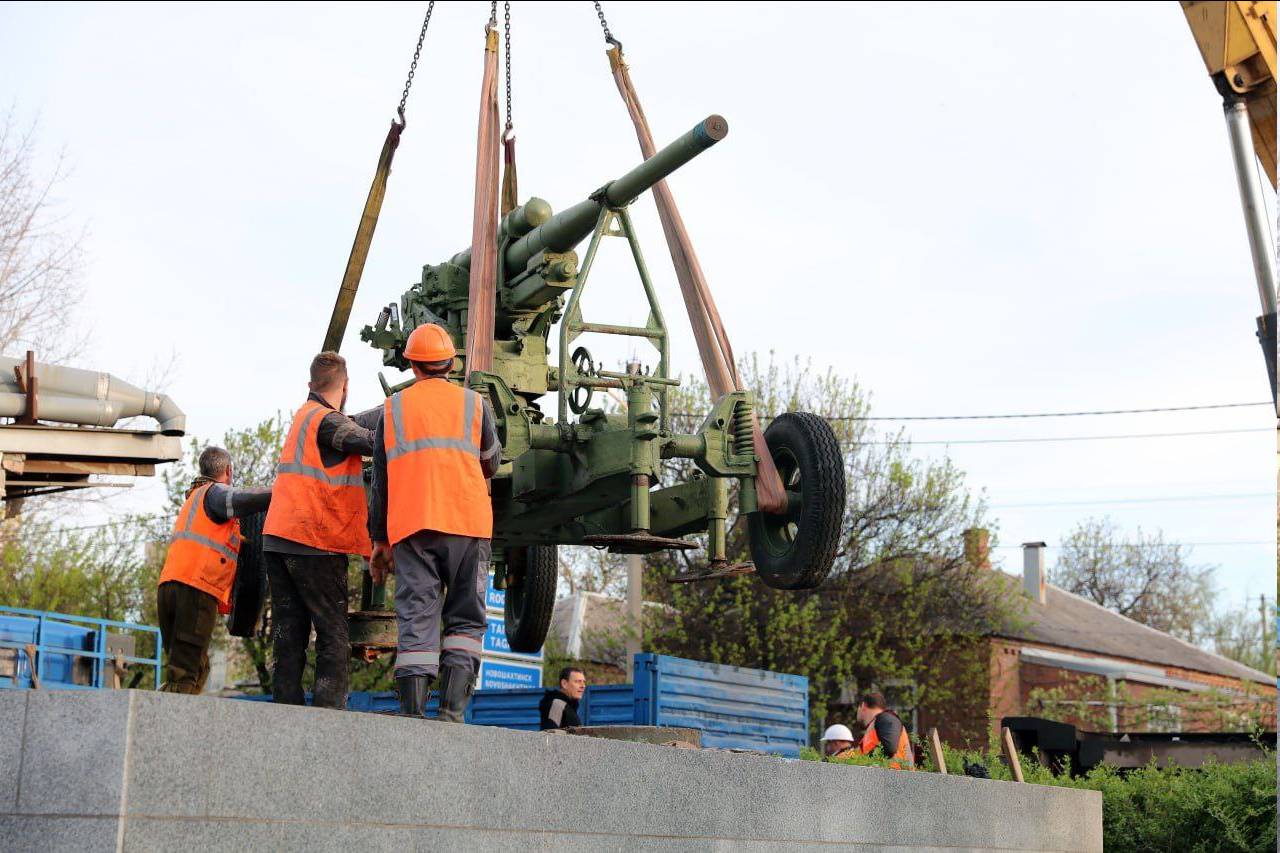
The Rostov region, bordering the DPR and the LPR, was again targeted by an airstrike by the Kiev regime last week. Unfortunately, this time there were casualties and damage to infrastructure. But fortunately, the damage was minor and the victim escaped with minor cuts.
In addition to military threats in the region, there is also the threat of flooding due to flooding. Today, the rise in water levels in the rivers of the Don region does not exceed dangerous levels, but the threat of flooding has not yet been eliminated. Meanwhile, in the Rostov region, where they know first-hand what the “big water” is, they empathize with the inhabitants of the affected regions and send them humanitarian aid.
Threats of war and natural disasters do not cancel planned work in the region, but in some cases they make them more urgent. Read more about these and other events in the review. IA Krasnaya Vesna.
Due to a UAV attack, the company was damaged and its employee was injured
Hardly a week goes by without the kyiv regime attempting to carry out airstrikes against the Rostov region. This past work week was no exception. On the night of April 18, service air defense systems destroyed three Ukrainian drones near the city of Kamensk-Shakhtinsky.
After debris fell on an industrial warehouse, the glass was damaged. Furthermore, there is a drop. An employee of the company suffered minor injuries in the form of cuts, first aid was provided and the victim refused hospitalization.
The Rostov region is responding to the airstrikes by increasing assistance to the front. This help comes from both authorities and concerned businesses and residents.
As regional governor Vasily Golubev said on April 18 during his annual report to the regional legislative assembly, “At the expense of the regional government reserve fund and federal interbudgetary transfers, the costs of supporting the special operation, military personnel and their families were covered as a priority”.
In the case of military units, funds from the regional assistance fund are used to purchase military-technical equipment, construction materials, cars, quadcopters, radio stations and other equipment.
Families of military personnel are taken under separate escort. And for demobilized military personnel in Rostov-on-Don, a professional retraining program was launched.
Is it possible to reactivate bearing production?
After the collapse of the USSR, hundreds of enterprises in Russia fell into disrepair and many industrial achievements were lost. In particular, it concerns the production of bearings.
In Rostov-on-Don there is a GPZ-10 bearing plant, which in Soviet times was one of the city-forming enterprises. By the mid-1980s, it had reached a production capacity of 75 million bearings per year. However, after the collapse of the country, the company was almost completely destroyed, like many similar factories.
Is it possible to revive bearing production in Russia? In the Rostov region they believe so. In the press service of the regional government they reported that they plan to create the “Bearing” cluster.
“Currently more than 72% of bearings used in Russia are manufactured abroad. “Bearing dependency” is a big problem for the Russian industry. Our interregional “Bearing” group will allow us to solve it.””, explained the head of the Ministry of Industry and Energy of the Rostov region, Andrey Savelyev.
The group is planned to produce roller and needle bearings for automobiles, as well as ball bearings for aircraft and electronic products. In addition, not only local companies, but also companies from the Moscow and Tver regions will work in the technology park.
They plan to register the group in the register of the Ministry of Industry and Trade of the Russian Federation and start producing bearings in the second half of 2024. Product design documentation is currently being developed. As Savelyev highlighted, this project is one of the most important in the region in the 2024 program.
Big water: is there a threat of flooding?
At the beginning of the week, on April 15, the Department for the Prevention and Elimination of Emergency Situations in the Rostov region warned that a surge of wind with rising water was expected at the mouth of the Don River.
The next day, the press service of the regional administration stated that “Water levels of the Don rivers from Azov to Rostov-on-Don will be at unfavorable levels.”adding that “Under such conditions, flooding does not occur in populated areas.”.
In turn, Deputy Alexander Savukov, head of the General Directorate of the Ministry of Emergency Situations of the Russian Federation for the Rostov region, said that this spring floods in the region are developing normally and “We do not foresee any exit beyond the floodplain of the river and the flooded areas.”
He noted that in winter in the Rostov region there was moderate snowfall, and in spring precipitation was also moderate. However, the evolution of the situation will depend on time.
“I think everyone remembers last fall when we were flooded and we all responded quickly and provided assistance. We are prepared for this risk. “It doesn’t happen cyclically, it happens because of the weather.”Savukov said.
Rescuers monitor the situation and control the water level using sensors connected to the Safe City system.
And while the flood situation on the Don remains normal, the Rostov region is helping the regions that suffered from the floods. Thus, more than 60 tons of drinking water were sent to the Orenburg region. Humanitarian aid was collected by organizations and companies in the Rostov region with the support of the regional government.
Rostov-on-Don remembers its young defenders
The monument to the female anti-aircraft gunners who died defending Rostov-on-Don during the Great Patriotic War has been sent for restoration.

“An anti-aircraft gun, a monument to the female anti-aircraft gunners who died defending Rostov-on-Don in 1942, was sent for restoration. “The 52-K anti-aircraft gun will be restored by railway workers from the North Caucasus.”– reported on April 17 in the press service of the Ministry of Transport of the Rostov region.
After restoration, the monument will be installed on the Pobeda retrotrain, which will run on the North Caucasus Railway. After completing the route, the weapon will return to its pedestal.
Female anti-aircraft gunners who fought in the 734th Rostov Air Defense Regiment achieved the feat in 1942 during the battle for the city. In July, before the offensive, Rostov was bombed for several days and the anti-aircraft gunners took the hit. And when they stopped bombing, the Nazis brought out tanks and armored vehicles.
A messenger was sent from headquarters to the anti-aircraft gunner battery with the order to leave immediately, but he could not reach the girls and disappeared. And the anti-aircraft gunners continued the battle. They managed to destroy two fascist tanks and several motorcycles. But the forces were too unequal. The Nazis smashed through the battery with tanks, crushing the anti-aircraft gunners.
These twenty girls were only between 17 and 19 years old. In memory of her feat, a monument was erected in Rostov-on-Don – a 37 mm anti-aircraft gun that was found at the site of the battle.
Source: Rossa Primavera
I am Michael Melvin, an experienced news writer with a passion for uncovering stories and bringing them to the public. I have been working in the news industry for over five years now, and my work has been published on multiple websites. As an author at 24 News Reporters, I cover world section of current events stories that are both informative and captivating to read.
